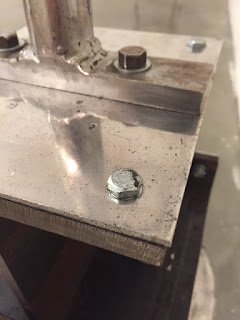Ali Ruffner
I slept with
scissors on my bed, 2016
mattress, cloth,
wood, hair, silk, clothing, blinds, glass, wire, yarn
Installation
The bed is a place to sleep, make love, think, eat, watch tv, fuck, write, smoke, love, cry, laugh, tell secrets, roll around, take naps, relax, be anxious, connect, to watch and be watched.
I could tell many stories about this particular bed, but that's just another element. I didn't start with this sculpture; it came from a thought process of my own bedroom, always shared with my sisters and rescues some of the childhood memories and deepest feelings of the past. To an outside viewer however, the piece is interested in exposing the intimacies and intricacies of a bed space unknown to the viewer. They are aware of the intimacy of the space by the clothing they are standing and stepping on as they move across the floor, but also apparent is the disjointed unusual combinations and collisions of objects. The pillow made from hair, the gutted mattress, the ash, or the quiet silk.
I slept with scissors on my bed is just as much about making the outward viewer realize the space they have entered is not their own as it is about revealing secrets, memories, sexual adventures, emotional pain, death, chaos, and neatness and garbage.




















































